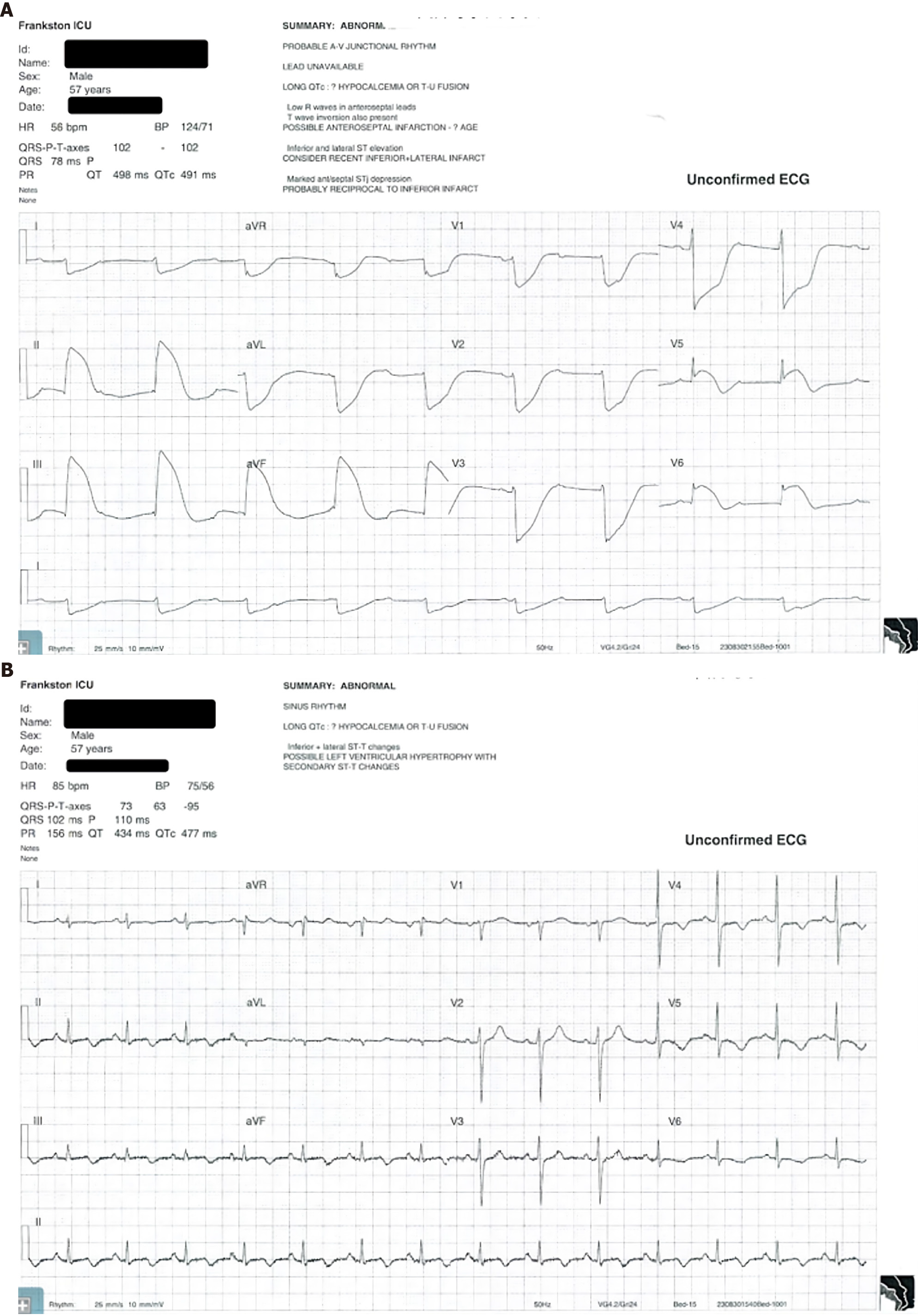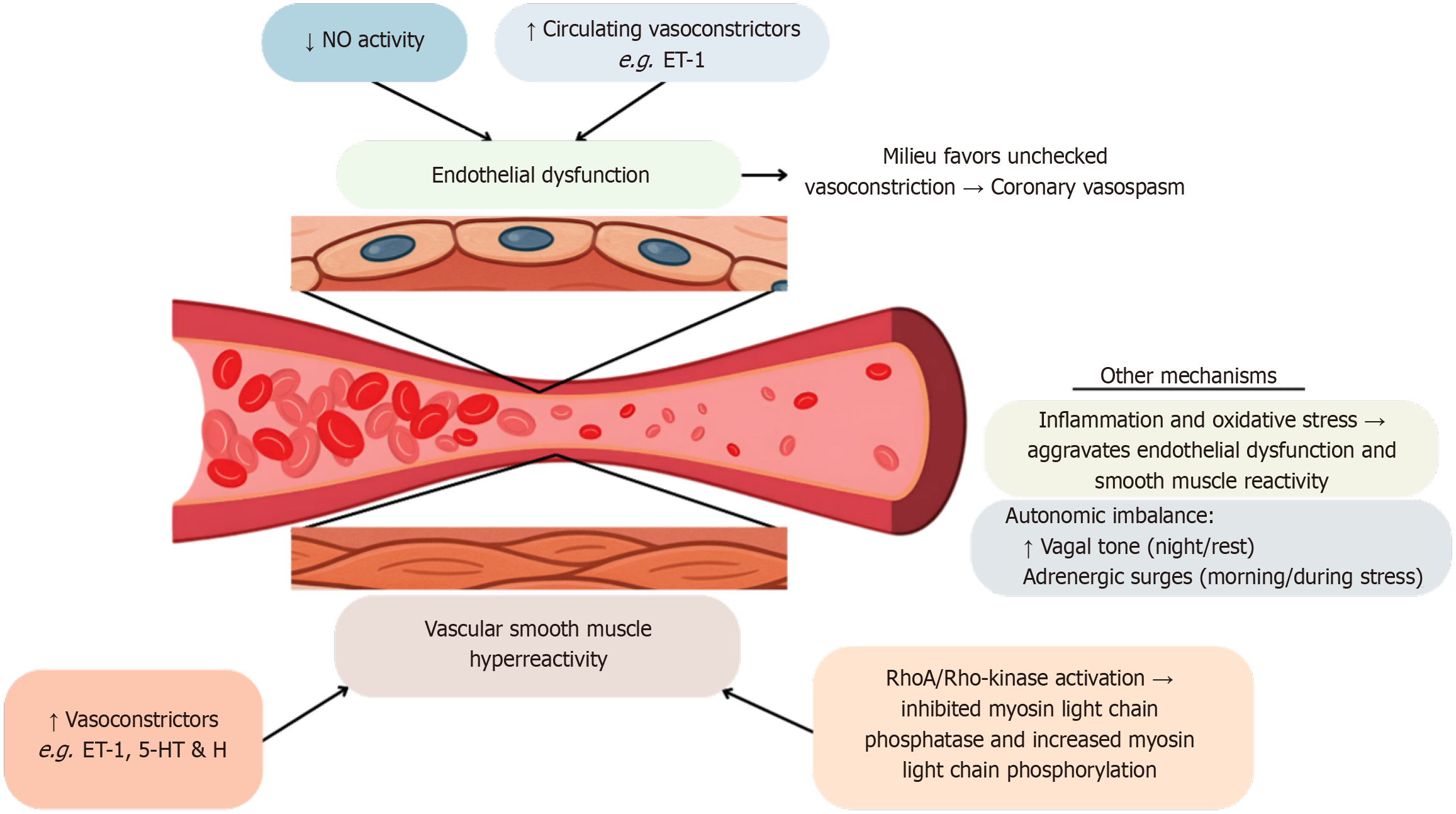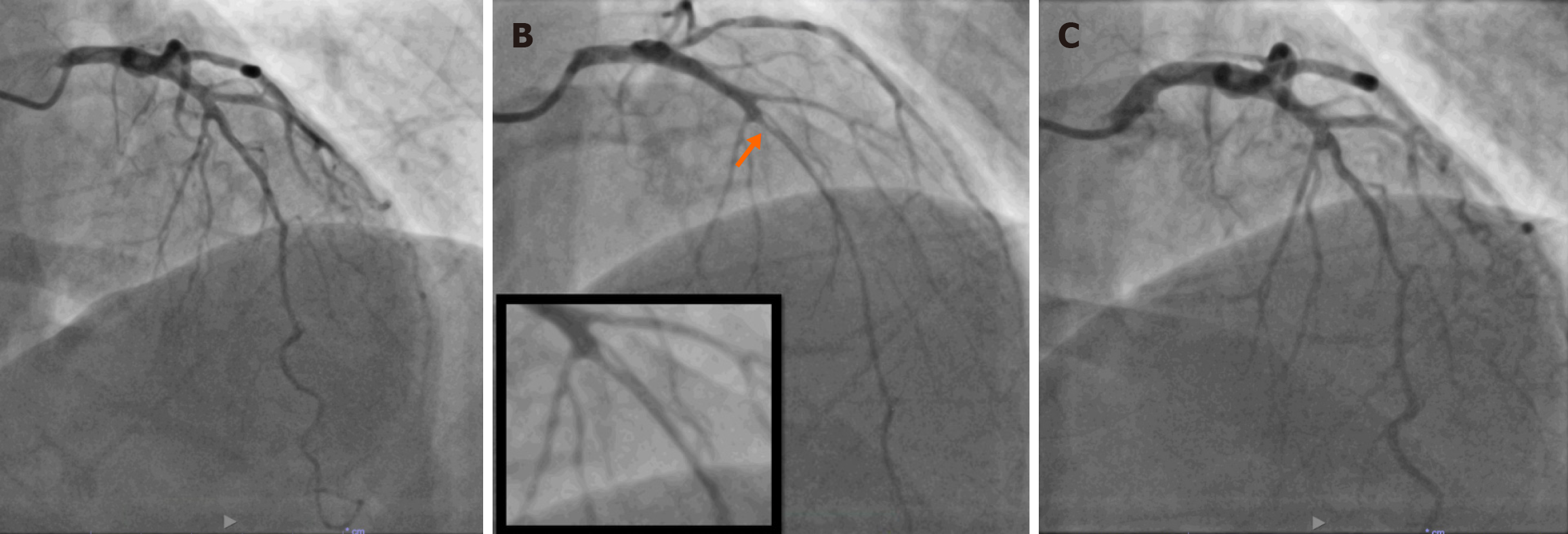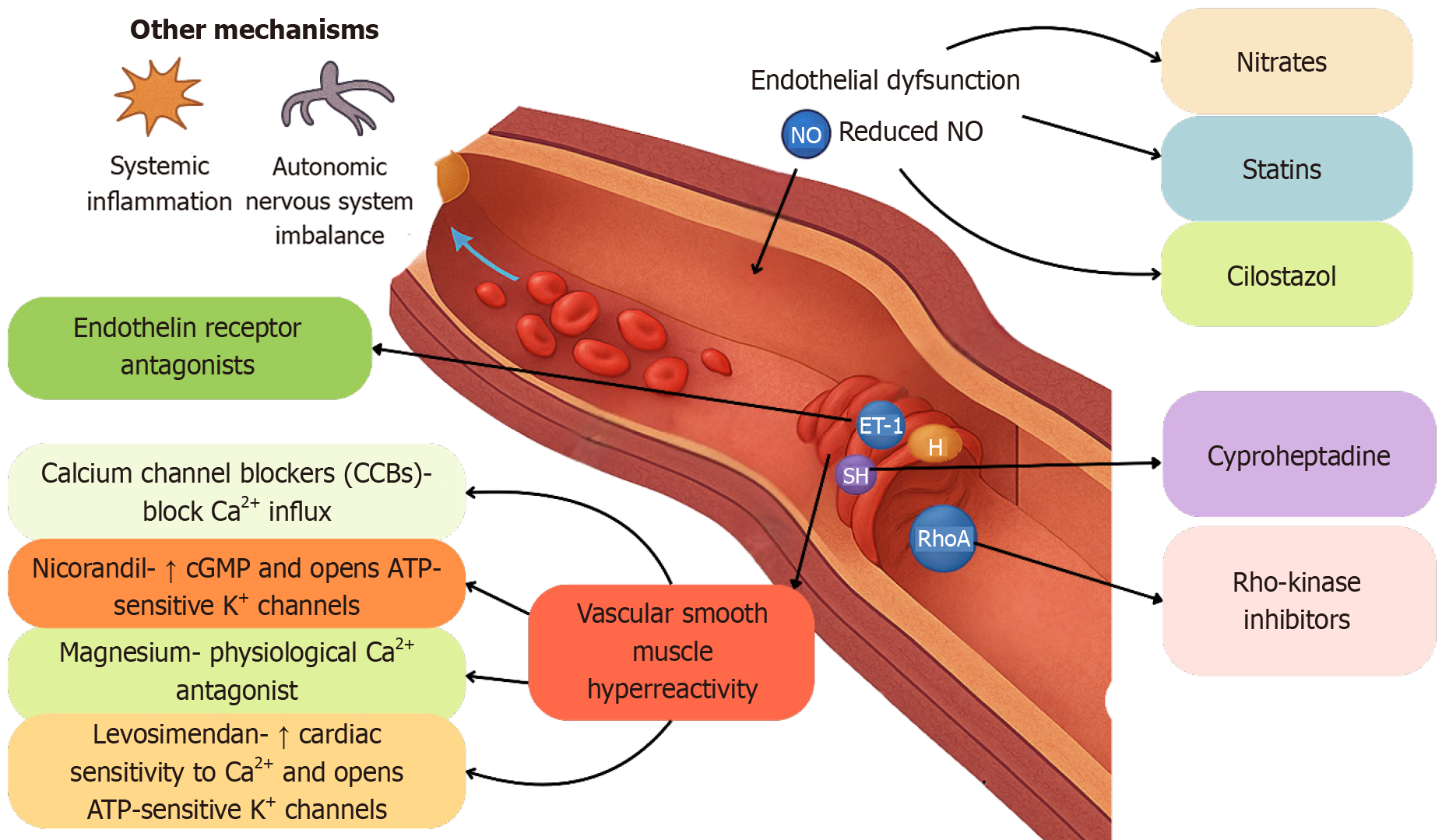Copyright
©The Author(s) 2025.
World J Cardiol. Oct 26, 2025; 17(10): 108594
Published online Oct 26, 2025. doi: 10.4330/wjc.v17.i10.108594
Published online Oct 26, 2025. doi: 10.4330/wjc.v17.i10.108594
Figure 1 A 57-year-old patient with vasospastic angina.
A: Dramatic ST-elevation in the inferolateral leads associated with a complete heart block; B: Reversion back to his baseline electrocardiogram within 5 minutes. ECG: Electrocardiogram.
Figure 2 Vasospastic angina results from a transient coronary artery spasm due the interplay of endothelial dysfunction, vascular smooth muscle hyperreactivity, inflammation, and autonomic imbalance.
These factors collectively lower the threshold for inappropriate coronary vasoconstriction. NO: Nitric oxide; ET-1: Endothelin-1; 5-HT: 5-hydroxytryptamine (serotonin); H: Histamine.
Figure 3 Positive acetylcholine provocation testing involving the mid-left anterior descending artery.
A: Baseline angiography; B: Significant vasospasm predominantly in the mid-left anterior descending artery region (orange arrow) with 50 mg of intracoronary acetylcholine; C: Reversal of vasospasm following 200 mg of intracoronary glyceryl trinitrate.
Figure 4 Pharmacologic treatment targets in vasospastic angina.
This figure illustrates key pathophysiological mechanisms in vasospastic angina, including endothelial dysfunction and vascular smooth muscle hyperreactivity, along with targeted therapies. NO: Nitric oxide; ET-1: Endothelin-1; SH: Serotonin and histamine; H: Histamine; CCB: Calcium channel blockers; cGMP: Cyclic guanosine monophosphate; ATP: Adenosine triphosphate.
- Citation: Ralota KK, Layland J. Vasospastic angina: Pathophysiology, diagnosis, and emerging therapeutic approaches. World J Cardiol 2025; 17(10): 108594
- URL: https://www.wjgnet.com/1949-8462/full/v17/i10/108594.htm
- DOI: https://dx.doi.org/10.4330/wjc.v17.i10.108594
















